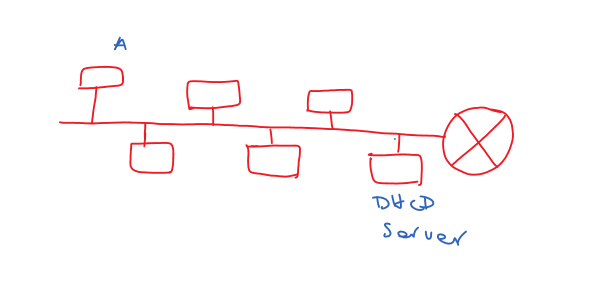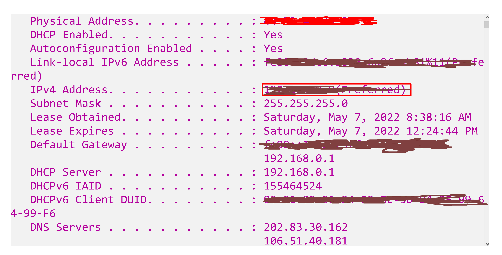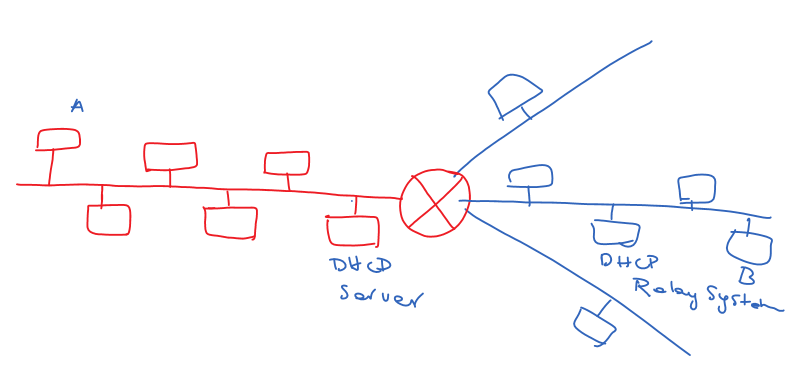Dynamic Host Configuration Protocol DHCP
For Complete YouTube Video: Click Here
This class will try to understand Dynamic Host Configuration Protocol DHCP.
We have already discussed the concept of Reverse Address Resolution Protocol ARAP in our previous classes.
Dynamic Host Configuration Protocol DHCP
In the Reverse Address Resolution Protocol RARP, we have discussed that the IP addresses are statically assigned.
Once the IP address is assigned, it is permanently fixed to that system even though the user is not using the internet.
To use the IP addresses efficiently, we have the mechanism of Dynamic Host Configuration Protocol DHCP.
To understand this consider a sample network as shown below.

In the above network node, A wants to connect to the internet.
Node A will broadcast a DHCP request stating that this is my MAC address and that I want an IP address.
After receiving the request, the DHCP server will send the IP address in the response.
If you want to know whether the DHCP server is there or not, use the “ipconfig /all” command (for Windows) in the command prompt.
The image below shows the data transferred from the DHCP server.

The critical data from the above information is the lease obtained, and the lease expires.
The IP addresses that are obtained are not permanent.
A lease time is provided, and once the lease time expires, the IP address should be automatically renewed by the system.
If the renewal request is not sent, the IP address is sent back to the pool of IP addresses in the DHCP server.
What if we sub-networks as shown below.

Do we have a DHCP server in each sub-network?
No, we have a DHCP relay server on each sub-network.
As the broadcast messages will not cross the network, these relay systems will take responsibility for transferring the DHCP requests to the DHCP server.
After receiving the response from the DHCP server, the relay server will send back the IP address to the requested node.
